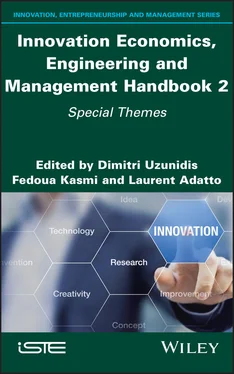121 121
122 122
123 123
124 124
125 125
126 126
127 127
128 129
129 130
130 131
131 132
132 133
133 134
134 135
135 137
136 138
137 139
138 140
139 141
140 142
141 143
142 145
143 146
144 147
145 148
146 149
147 150
148 151
149 152
150 153
151 154
152 155
153 156
154 157
155 158
156 159
157 161
158 162
159 163
160 164
161 165
162 166
163 167
164 168
165 169
166 170
167 171
168 173
169 174
170 175
171 176
172 177
173 178
174 179
175 180
176 181
177 182
178 183
179 184
180 185
181 186
182 187
183 188
184 189
185 190
186 191
187 192
188 193
189 195
190 196
191 197
192 198
193 199
194 200
195 201
196 202
197 203
198 204
199 205
200 206
201 207
202 209
203 210
204 211
205 212
206 213
207 214
208 215
209 217
210 218
211 219
212 220
213 221
214 222
215 223
216 225
217 226
218 227
219 228
220 229
221 230
222 231
223 233
224 234
225 235
226 236
227 237
228 238
229 239
230 241
231 242
232 243
233 244
234 245
235 246
236 247
237 248
238 249
239 250
240 251
241 252
242 253
243 254
244 255
245 256
246 257
247 258
248 259
249 260
250 261
251 262
252 263
253 264
254 265
255 266
256 267
257 268
258 269
259 270
260 271
261 272
262 273
263 274
264 275
265 277
266 278
267 279
268 280
269 281
270 282
271 283
272 284
273 285
274 287
275 288
276 289
277 290
278 291
279 293
280 294
281 295
282 296
283 297
284 298
285 299
286 300
287 301
288 302
289 303
290 304
291 305
292 306
293 307
294 308
295 309
296 310
297 311
298 312
299 313
Innovation Economics, Engineering and Management Handbook 2
Special Themes
Edited by
Dimitri Uzunidis
Fedoua Kasmi
Laurent Adatto

First published 2021 in Great Britain and the United States by ISTE Ltd and John Wiley & Sons, Inc.
Apart from any fair dealing for the purposes of research or private study, or criticism or review, as permitted under the Copyright, Designs and Patents Act 1988, this publication may only be reproduced, stored or transmitted, in any form or by any means, with the prior permission in writing of the publishers, or in the case of reprographic reproduction in accordance with the terms and licenses issued by the CLA. Enquiries concerning reproduction outside these terms should be sent to the publishers at the undermentioned address:
ISTE Ltd
27-37 St George’s Road
London SW19 4EU
UK
www.iste.co.uk
John Wiley & Sons, Inc.
111 River Street
Hoboken, NJ 07030
USA
www.wiley.com
© ISTE Ltd 2021
The rights of Dimitri Uzunidis, Fedoua Kasmi and Laurent Adatto to be identified as the authors of this work have been asserted by them in accordance with the Copyright, Designs and Patents Act 1988.
Library of Congress Control Number: 2021932860
British Library Cataloguing-in-Publication Data
A CIP record for this book is available from the British Library
ISBN 978-1-78630-701-9
Introduction
General Presentation
“ Innovation is everything in the economy that is either not being done, or not being done again .”
- Dimitri UZUNIDIS
Agility, flexibility and rapid adaptation to change are becoming the key words for growth and development in our society. Finding new ways of doing things and creating something new out of what already exists remains essential when facing crises (economic, social and environmental). The ability to innovate is therefore the main condition for maintaining the competitiveness and performance of companies, regions and territories in a changing context. Innovative activity has long been considered a driving force for “progress”, but its impact on the transformation of socio-economic systems is greater when a succession of profound changes are introduced on broader scales (organizational, social, environmental, political, behavioral, etc.). Achieving these transformations requires the mobilization of resources, information, knowledge and networks of specific actors in order to guide innovation efforts to respond to more global challenges such as reducing environmental impacts, building resilience, and improving health, safety and people’s well-being. Through what mechanisms and under what conditions does innovation enable more radical changes that progressively and sustainably reorient our modes of development? This is the overall question that this two-volume encyclopedic book answers, by mobilizing a set of interdisciplinary theories and concepts devoted to the study of innovation.
Innovation, in fact, consists of the design and marketing of new goods and technologies, the application of new working methods or the conquest of new markets. Today’s knowledge-based economy implies that innovation is the result of greater interaction between businesses, universities, public institutions, consumers and citizens. Innovation networks create new knowledge and contribute to the diffusion of new socio-economic and technological models, through new modes of production and distribution. Innovation results from technological, organizational and commercial changes.
How do organizations design and manage innovation processes? What strategies and management tools do they apply for the concrete implementation of innovation processes? What role do innovation policies play in driving these processes? How does innovation impact competitiveness and performance? This involves analyzing companies’ technological opportunities, organizational strategies and the integrated management of research and development, marketing and financial projects, etc.
This book is dedicated to the study of innovation. Theoretical reminders are associated with the discussion of concepts. Written in a didactic way, the reader will easily be able to situate the current debates around the need for technological and social innovation and the imperative of creating a climate conducive to the launch of large-scale innovation processes, because the current socio-economic stakes are as important as they are global. The book consists of two volumes. The first one is devoted to the presentation of the basic concepts. Its aim is to provide a broad and precise overview of the fundamental issues addressed by economists, historians and engineers specializing in innovation. The second volume contains a set of studies of current concepts and opens the debate on the evolution of the concept of innovation in the years to come.
The innovation process has a causal relationship with a problem – technological, economic, social – posed to the market economy and identified consciously or unconsciously by its actors (companies, entrepreneurs, consumers, etc.). Innovation is thus linked to the search for the optimal solution to the problem posed. This presupposes the use of knowledge and information from practice, experience and scientific activity. Innovation is itself a cumulative and historical process defined by six major characteristics highlighted in this book: (a) the impacts of innovation are difficult to predict; (b) the scale of diffusion of innovation is difficult to calculate; (c) innovative activities are asymmetric and staggered in time; (d) the time of learning, execution and diffusion plays a crucial role in the act of innovating; (e) the business environment conditions the time, scale, nature and impacts of innovation; and (f) innovations are interdependent.
Читать дальше













